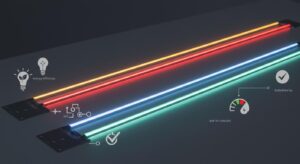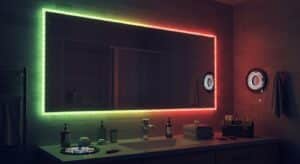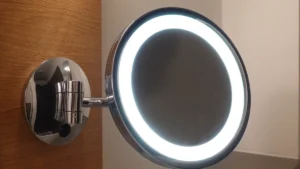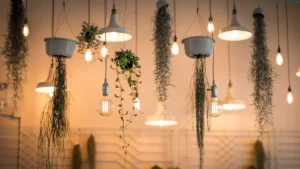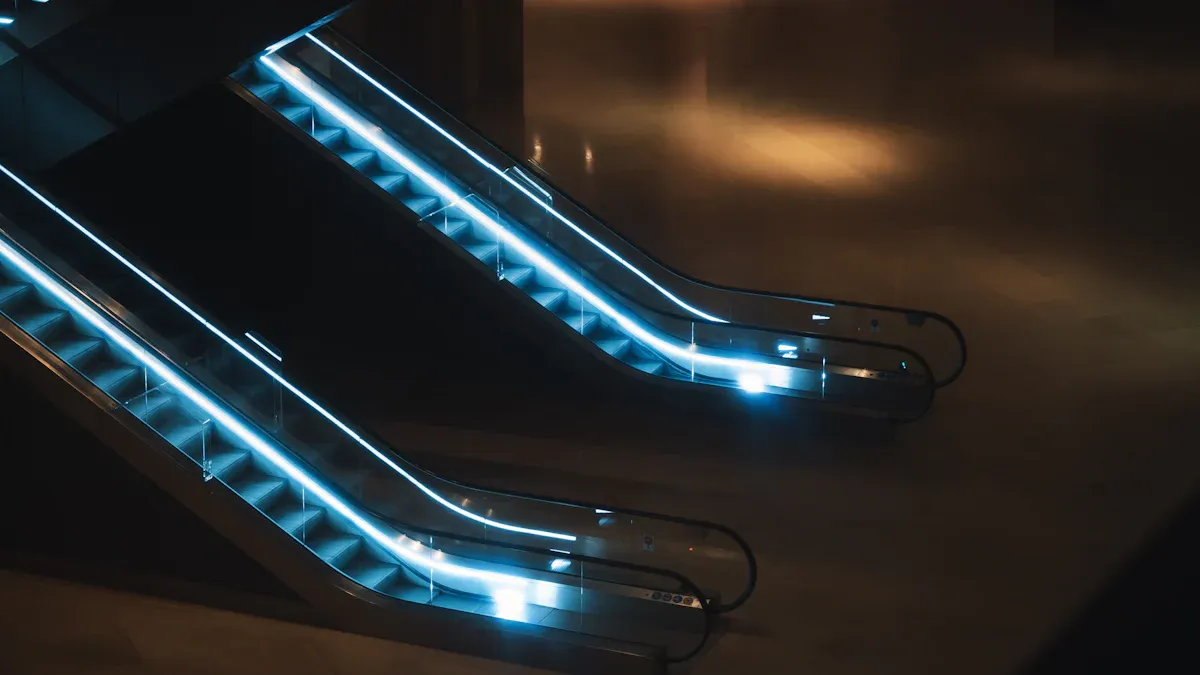
When evaluating COB light strips vs LED strips, you’ll notice significant differences in their functionality and ideal applications. COB light strips provide smooth, uniform brightness without any dark spots, whereas LED strips often display small bright spots. Additionally, COB strips are more energy-efficient and have a longer lifespan. However, LED strips remain popular due to their lower cost and high customisability.
Durability and cost are key factors when making a choice. For instance:
5630 LED chips deliver bright light while occupying minimal space.
Black PCBs aid in cooling the strips, preventing overheating.
These attributes make LED strips both economical and reliable.
Selecting the right option depends on your specific requirements, such as your budget, the desired lighting effect, and the installation setup. Understanding these factors will help you make an informed decision between COB light strips vs LED strips.
Key Takeaways
COB light strips give steady, even light with no dark spots. They are great for places like art galleries or shops.
LED light strips cost less and can be changed easily. You can adjust their brightness and colour, making them great for homes or fun projects.
COB strips use less energy and last longer. They may cost more at first but save money over time.
When picking between COB and LED, think about your needs. Choose COB for smooth lighting or LED for cheaper and flexible options.
Understanding COB light strips
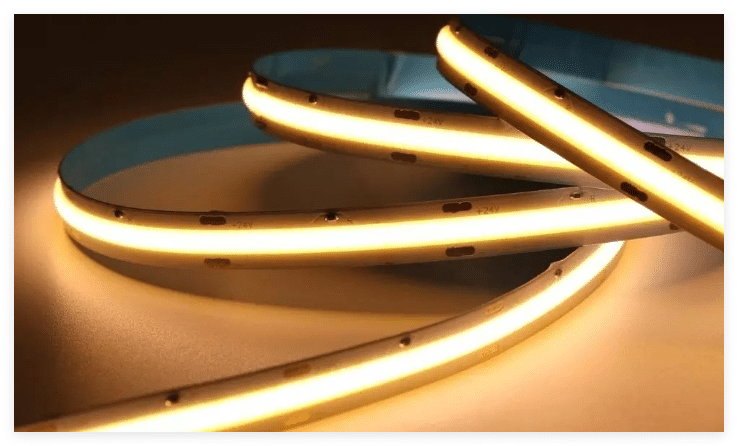
How COB technology works
COB (Chip-on-Board) technology is a big step forward in lighting. Unlike older LED designs, COB combines many small light chips into one unit. These chips work together to give off smooth and even light.
It starts with an electrical power source that powers the chips. The chips, made from indium gallium nitride (InGaN), create blue light when powered. A special coating then changes the blue light into white light. The coating’s mix decides the light’s colour tone. This creates soft, glare-free lighting perfect for many uses.
Component | What it Does |
|---|---|
Electrical Power Supply | Gives energy to power the LED. |
Light-Emitting Chip (Die) | Made of indium gallium nitride (InGaN), produces blue light when powered. |
Phosphor Coating | Changes blue light to white; its mix decides the light’s colour tone. |
COB strips handle heat very well. The chips sit on a base that spreads heat quickly. This keeps them cool and helps them last longer while working well.
Key features and benefits of COB light strips
COB LED strips have many advantages over older lights. They are very bright and save energy, giving up to 150 lumens per watt. This makes them better than the Energy Star standard, which is great for people who care about the environment.
COB strips give off even light without bright or dark spots. This makes them perfect for places needing good lighting, like shop displays or fancy designs. For example, a store using COB strips cut energy use by 25% and got 35% brighter lights. This helped boost sales by 12%.
COB strips are also very durable. Their smart heat control keeps them cooler, so they last longer. Tests show COB strips keep 90% brightness after 30,000 hours, while older LED strips drop to 70%. This means fewer replacements and lower costs. Warehouses using COB strips have cut bulb changes by 40%, saving time and money.
Understanding LED light strips
How traditional LED technology works
Traditional LED technology uses small lights called diodes. These diodes are arranged in rows or groups. Each diode has a special material that lights up when electricity flows through it. This process, called electroluminescence, creates bright and energy-saving light.
The diodes are placed on a bendable circuit board. A protective layer covers the board to keep out dust and water. Because the board is flexible, you can put LED strips in many places, even on curved or tight surfaces.
Feature | Description |
|---|---|
Light Source | Small diodes light up using electroluminescence. |
Circuit Board | Bendable and strong, allowing easy placement. |
Protective Coating | Protects the strip from dust and water. |
This design makes LED strips useful for many purposes, like decoration or work lighting. You can also choose strips with different numbers of diodes, such as 60, 120, or 240 per metre, depending on how bright you want the light.
Key features and benefits of LED light strips
LED strips have many features that make them a favourite for homes and businesses. They are simple to set up and save space. You can stick them on walls, ceilings, or even floors, depending on your needs.
Some LED strips let you control colours and brightness using an app. This makes them great for creating fun lighting effects in living rooms, offices, or shops. Plus, they use less electricity than old-style bulbs, saving you money.
Key Benefits of LED Strips:
Quick to set up and space-saving.
Can be placed on walls, ceilings, or floors.
App-controlled for easy customisation.
Saves energy and reduces costs.
You can pick from different types, like 60, 120, or 240 diodes per metre, to match your needs. Whether you want soft lighting for decoration or bright lights for workspaces, LED strips are a dependable choice. Their long life, energy savings, and ease of use make them a popular option in modern lighting.
Advantages of COB light strips
Brightness and even light
COB light strips are brighter than regular SMD strip lights. They combine many small LED chips into one unit. This design gives smooth, even light without bright spots. They are great for lighting stores or highlighting building features. COB strips make spaces look neat and professional.
COB LEDs produce natural colours that look like daylight. This is perfect for places needing accurate colours, like art galleries or studios. They show true colours of artwork and products. COB strips also keep their brightness steady over time, making them reliable for long use.
Small size for creative uses
COB light strips are slim and fit in tight spaces. Unlike SMD strips, they are better for detailed designs. They work well for under-cabinet lighting, signs, or decorations.
You can bend COB strips without breaking them. For short spaces, 12V COB strips are affordable and efficient. For bigger areas, 24V COB strips are more stable and work well for outdoor paths or wall lights.
Their small size keeps setups tidy and stylish. They make lighting look clean and modern.
Energy-saving and long-lasting
COB light strips use less power but give bright light. They save energy and lower electricity bills. This makes them good for homes and businesses. They are also eco-friendly, helping the environment.
COB strips last up to 50,000 hours, so you replace them less often. They handle heat well, so they work in tough conditions. Many are waterproof and dustproof, making them great for outdoor use.
Both 12V and 24V COB strips are dependable for long-term lighting. They save energy, last long, and are a smart choice for any project.
Disadvantages of COB light strips
Higher upfront cost
COB light strips cost more than regular LED strips. This is because they use advanced technology. Many small LED chips are combined into one unit. This design improves performance but raises the price.
Cost Factor | SMD LEDs | COB LEDs |
|---|---|---|
Buying Price | Cheaper | More expensive due to technology |
Energy Use | Less efficient | Saves more energy over time |
Lifespan | Shorter | Lasts longer, fewer replacements |
Maintenance Costs | Higher | Lower over time |
Even though they cost more at first, COB strips save money later. They use less energy and need fewer replacements. For example, their long lifespan reduces how often you need to buy new ones.
Heat dissipation challenges
COB light strips create more heat than regular LED strips. This happens because of their compact design. Managing heat is important to keep them working well. If not cooled properly, they may overheat and stop working.
To fix this, makers use special cooling methods. These include wider copper lines, thermal pads, and cooling fans. For high-power uses, aluminium heat sinks and fans are added. Tests show these methods lower heat and keep the strips safe to use.
Limited colour-changing options
COB light strips are bright and even but lack colour options. Regular LED strips can change colours, but COB strips focus on steady white light. This design limits their ability to switch colours.
Some COB models have trouble showing accurate colours. For example, the Cree CXA3070 struggles with colour shifts between warm and cool tones. Also, some makers don’t share full colour details, making it hard to judge their quality for colourful lighting needs.
Advantages of LED light strips
Budget-friendly and cost-saving
LED light strips are a cheap way to light spaces. They are affordable because of improved SMD technology. This lowers production costs but keeps good performance. Right now, COB LED strips cost about USD1.00 per metre. However, SCOB LED strips may match this price in six months. This shows how SMD strips are cost-effective. They give bright light and save energy without high prices. Choosing LED strips offers good value for money. They are a smart choice for homes and businesses.
Many choices and customisation
LED strips are flexible and can be customised easily. You can pick features to match your needs. For example, LED density ranges from 60 to 240 LEDs per metre. This lets you adjust how bright the light is. Power use varies between 6W and 24W per metre. You can also change the colour temperature from 2700K to 6500K. This helps create the right mood for your space. The table below shows the options available:
Feature | Details |
|---|---|
LED Density | 60–240 LEDs/m |
Power Output | 6W–24W/m |
Colour Temperature | 2700K–6500K (adjustable) |
IP Grade | IP20–IP68 |
Warranty | 3 to 5 years |
Ideal Applications | Shops, cove lighting, signs |
This makes LED strips great for many uses, like shop displays or home decor.
Simple to install and flexible
Putting up LED strips is easy, even for beginners. Follow simple steps to get good results. First, plan where to place the strips and gather tools. Test the setup before final installation to check it works. If changes are needed, turn off the power and adjust safely. You can also cut the strip to fit your space. LED strips can bend to fit curved or tight spots. Their ease of use makes them popular for DIY projects and professional setups.
Disadvantages of LED light strips
Uneven light output
LED light strips can give uneven lighting. They use small lights called diodes placed along the strip. Spaces between these lights cause dark spots. This makes the lighting look patchy, especially in areas needing smooth light. For example, under-cabinet lights or display cases may show shadows. These shadows can make the setup look less attractive.
Using strips with more diodes can reduce dark spots. But this costs more and uses extra power. This makes it harder for people on a budget. Uneven lighting can also make accent lights look less professional.
Less energy-efficient than COB
LED strips save energy compared to old bulbs. But they are not as efficient as COB strips. Regular LED strips have spaced-out diodes, which waste energy. Each diode needs its own wiring, using more power.
COB strips group many chips together, cutting energy waste. If saving energy is important, LED strips may not be the best choice. Over time, their higher power use can raise electricity bills. This is especially true for big projects.
Bright spots in some uses
LED strips often show bright spots from each diode. These spots are noticeable behind thin surfaces or in shallow spaces. For example, backlighting signs or panels may look uneven. This can ruin the design’s appearance.
Diffusers or deeper channels can hide these bright spots. But these fixes cost more and take extra effort. If smooth lighting is essential, COB strips are a better option. They give even light without bright spots.
COB light strip vs LED: A closer look
Brightness and light quality
COB light strips shine brighter with even light. Unlike regular LED strips, which show bright spots, COB lights spread light smoothly. They have a wide beam angle over 180°, lighting surfaces evenly.
COB strips pack more LED chips, giving bright light without using too much power.
SMD LED strips vary in brightness. For example, SMD 5050 LEDs are brighter than SMD 3528 LEDs but still show light dots, causing uneven lighting.
COB LEDs remove bright spots, reduce shadows, and give smooth lighting.
For places like art galleries or shops, COB strips are better. They show natural colours and keep brightness steady. LED strips are flexible but may not give the same smooth light, especially in professional settings.
Energy efficiency and power use
Saving energy is important when picking light strips. COB strips are very efficient, giving bright light while using less power. This makes them a good choice for homes and businesses.
Light Strip Type | Power Use | Heat Levels |
|---|---|---|
COB | Higher brightness | Lower heat |
SMD | Lower brightness | Higher heat |
COB strips handle heat well, staying cool and working steadily. SMD strips use less power at first but get hotter, which can waste energy later. If you want to save energy long-term, COB strips are better.
Choosing COB strips lowers electricity costs and helps the planet. LED strips are cheaper to buy but don’t save as much energy as COB strips in the long run.
Durability and lifespan
Durability matters, especially in tough conditions. COB strips last longer because they manage heat well. This keeps them cool and working for a long time.
COB LEDs can last up to 50,000 hours, keeping their brightness steady.
Their smooth light and good heat control make them great for long-term use.
LED strips also last about 50,000 hours, but heat, bad setup, or poor wiring can shorten their life.
COB strips are good for outdoor use since many are waterproof and dustproof. They are strong and work well in harsh conditions. LED strips are durable too but may need replacing more often in tough spots.
If you need long-lasting lights, COB strips are a smart pick. They handle heat well and stay reliable for years, making them ideal for big projects needing steady lighting.
Cost and value for money
When looking at COB light strips and LED light strips, think about both the price and long-term benefits. COB light strips cost more at first because of their advanced design. They have tightly packed chips that perform better but are pricier to make. However, they save energy and last longer, making them cheaper over time.
LED light strips are cheaper to buy initially. Their simpler design and easy availability lower production costs. This makes them great for projects with a small budget. While they don’t save as much energy or last as long as COB strips, they are perfect for short-term use or decoration.
Cost Factor | COB Light Strips | LED Light Strips |
|---|---|---|
Initial Price | Higher due to advanced technology | Lower, good for budget projects |
Energy Efficiency | Saves more energy over time | Less efficient, uses more power |
Lifespan | Longer, fewer replacements needed | Shorter, may need frequent changes |
Maintenance Costs | Lower due to durability | Higher because of shorter lifespan |
If you want lights that save money and last long, pick COB strips. For temporary or decorative setups, LED strips are a cheaper and flexible option.
Tip: Think about how long your project will last and how much energy it needs. COB strips are better for performance, while LED strips are great for saving money upfront.
Best applications for COB and LED light strips
The choice between COB and LED light strips depends on where you’ll use them. COB light strips are best for places needing smooth, bright light. They work well in art galleries, shops, and offices because they give even light and show colours accurately.
Industry | Application Description |
|---|---|
Art Galleries | COB strips give steady light, reduce glare, and show true colours of artwork. |
Retail Displays | These strips brighten products, cut shadows, and create a welcoming look, ideal for shelves and displays. |
Modern Workspaces | COB strips provide flicker-free light, helping focus and reducing eye strain in offices. |
LED light strips are better for fun and creative lighting. They are flexible and can change colours, making them great for homes, restaurants, and events.
Application Type | LED Light Strip Benefits |
|---|---|
Home Decor | Adds mood lighting with adjustable colours, perfect for bedrooms or living rooms. |
Restaurants | Creates lively settings with colour-changing lights, improving the dining experience. |
Entertainment Venues | Offers exciting lighting effects for shows and parties, enhancing the atmosphere. |
Note: Use COB strips for professional spaces like galleries or offices. For creative and decorative ideas, LED strips are the better choice.
Deciding between COB and LED light strips depends on your needs. COB strips are very bright and give even light. They produce up to 80 lumens per watt and are compact. These are great for places like offices or art galleries. On the other hand, LED strips are flexible and can change colours. They also let you adjust the colour temperature, making them ideal for decorations or creative designs.
Tip: Think about your budget, lighting needs, and where you’ll use them. For smooth, long-lasting light, choose COB strips. For affordable and adaptable lighting, go with LED strips.
FAQ
What is the main difference between COB and LED light strips?
COB light strips give smooth, even light without bright spots. LED light strips show small light points, which can look uneven. COB strips work best for professional use. LED strips are better for decoration or saving money.
Are COB light strips more energy-efficient than LED light strips?
Yes, COB light strips save more energy. They use advanced designs to make brighter light with less power. This makes them great for long-term use, especially where saving energy matters most.
Can you use COB light strips outdoors?
Yes, many COB light strips are made for outdoor use. Look for ones with waterproof and dustproof ratings like IP65 or higher. These features keep them working well in rain or dusty areas.
Which type of light strip is easier to install?
LED light strips are easier to set up. They are flexible and have sticky backs, perfect for DIY projects. COB light strips might need extra cooling parts or special setups, making them harder to install.
How do you choose between COB and LED light strips?
Think about what you need. Pick COB light strips for bright, even light in professional spaces. Choose LED light strips for cheap, customisable lights for decoration. Check your budget, energy needs, and where you’ll use them to decide.
See Also
Understanding Cob Led Strips And Their Functionality
Best LED Strip Lights Of 2024: A Pricing Overview
Selecting The Perfect LED Strip Lights For Linear Lighting
Comparative Analysis Of High-Brightness LED Strips For All Uses
